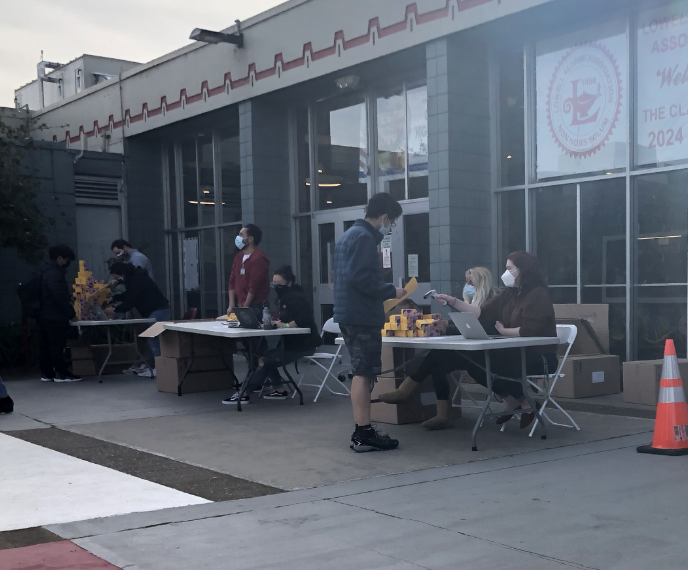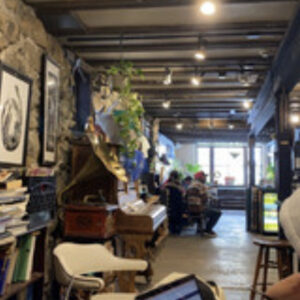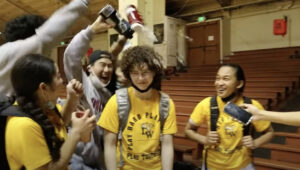With the Omicron surge, the demand for COVID-19 testing in Bay Area public schools has increased. However, a shortage of tests has made them less accessible, which has caused problems for several school districts.
On December 22, Governor Gavin Newsom announced that California would provide at-home tests for all students before school started in January, in preparation for the increase in COVID-19 cases over winter break. Of the six million tests that Newsom promised, only about half of the school districts in California had received tests by the time school started.
In California, COVID-19 cases rose following the first weeks in January after students returned to school, and school districts faced a host of problems from the surge.
The San Francisco Unified School District (SFUSD) asked students to test via Color Health, a private company that works with SFUSD to perform PCR COVID-19 testing. However, Color Health did not have enough tests. Moreover, Color Health experienced system outages during the beginning of 2022, causing six test sites to close, yet another obstacle to students being tested in time for the start of school. Finally, once students test through Color, their tests take days to get results. So when students received kits for the PCR testing after they returned to school, they did not know if they had COVID-19 for several days after.

photo by Keira Nakamura
The majority of SFUSD students were unable to test before the start of the spring semester.
“My school had some tests, but they only gave them to people with symptoms and staff,” said Kelsey Lee, a senior at George Washington High School. “So, I was never able to get one.”
Ironically, testing caused a further snafu for SFUSD. Since teachers had easier access to tests, more COVID-19 cases were detected. Over 600 teachers were absent from school on January 3, and there were not enough substitutes to fill all of these positions. The teacher’s union at SFUSD reacted by demanding better testing accessibility and N95 masks for the community. By January 5, almost 900 teachers called in sick and were absent from teaching, creating a shortage of teachers. Despite this, school resumed, with administrators taking the roles of substitutes.
On January 13, SFUSD and the United Educators of San Francisco reached an agreement to provide more personal protective equipment (PPE) and to expand testing services. SFUSD recently set up their first antigen testing site at their headquarters, which provides free testing with results that appear faster than Color Health’s PCR tests. Some schools have also begun to set up tests to test students outside.
The Oakland Unified School District (OUSD) saw three teacher sickouts (unwarranted sick leave taken in protest) during January, where teachers would call in sick to protest unsafe health measures against COVID-19. The first sickout culminated on January 7 and resulted in around 500 absent teachers, forcing the closure of a dozen schools. The subsequent sickouts also had participation from over a thousand students.
To avoid a full-blown teacher’s strike, OUSD agreed to provide weekly COVID-19 tests for students and staff and more accommodations for families to test at a community test site. The district also agreed to provide more space outdoors for safer eating and distributed 200,000 KN95 masks to schools.
Hayward Unified School District (HUSD) saw hundreds of positive cases for both teachers and students, and the district decided to close down and transition to virtual learning on January 11, 2022. The state — including the California Teachers Association — disapproved, as California’s law states that Hayward needed the state’s approval to go virtual. A week later, even as COVID-19 cases remained high, students returned to in-person learning. Now, unvaccinated students and staff are mandated to test weekly.
By mid-January, all California public schools had received take-home tests for students. Some schools, SFUSD for example, asked students to test before Martin Luther King Jr. Day and the Lunar New Year with the two take-home tests that they received at school. However, students were also asked to test if they experience COVID-19 symptoms or were exposed to someone with COVID-19 — but received no additional tests.
In this case, community testing sites are an imperative tool to provide free testing and track the spread of COVID-19. In San Bruno, the Bay Area Phlebotomy and Laboratory Services (BayPLS) provides COVID-19 testing that is targeted towards students, though ultimately anyone can be tested.
Every day in January about 1,000 tests were administered. Of these tests, over 25% of people tested were positive for COVID-19.
“The (positivity) numbers are probably higher than the general public, whether it was from exposure, or they weren’t feeling well” when they came in to test, said Salu Ribero, the CEO of BayPLS. “But there were also a lot of people who were just testing to go back to school since schools required a negative test.”
In February, Omicron cases decreased significantly at BayPLS to about 10% of positive cases. Testing as a whole has decreased at the site, to around 200 people a day.
“People stop being so afraid of variants, after a while,” said Ribero. “We’re now getting into the third year of the pandemic. We’ve seen multiple waves of variants like Delta and Omicron, and we should expect more variants to arise.”
Ribero still believes that testing is a necessity. “It’s important to know if you’re infected so you can stop the chain of transmission,” Ribero said.
With forthcoming approvals for vaccines for children under five, the last remaining groups of unvaccinated people have the ability to protect themselves and others against the virus. As schools gain their footing to regulate COVID-19 tests, Ribero and staff at BayPLS are hopeful that cases will continue to decrease.





